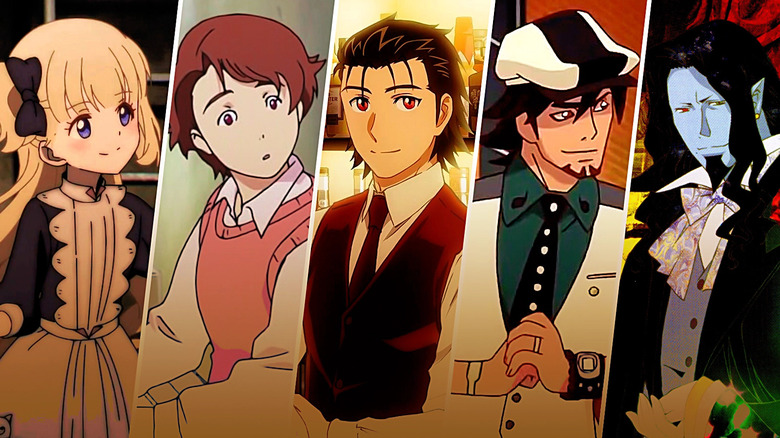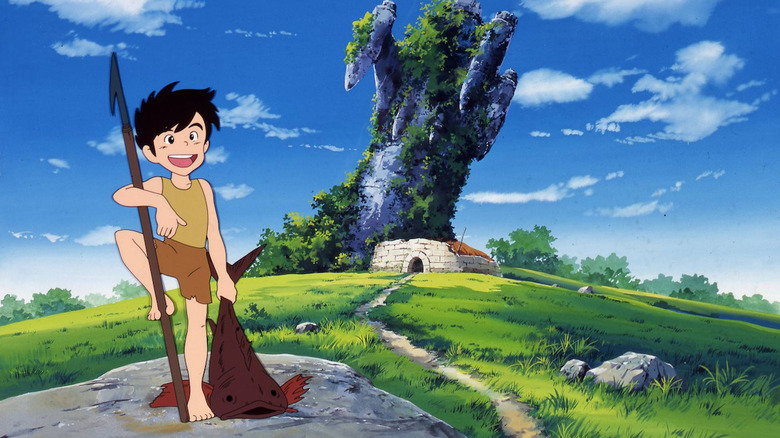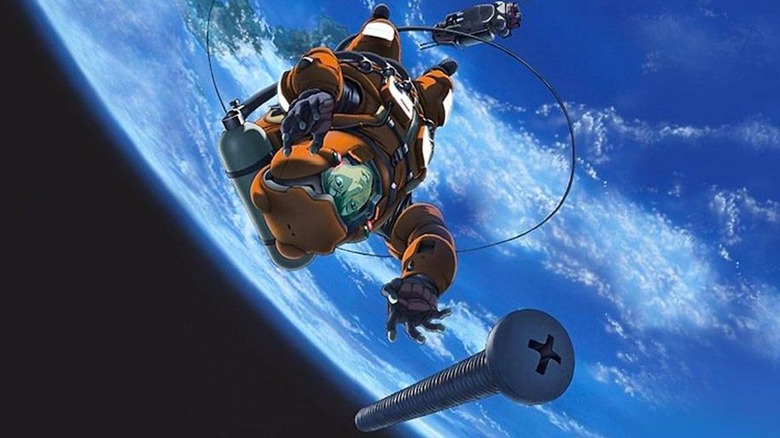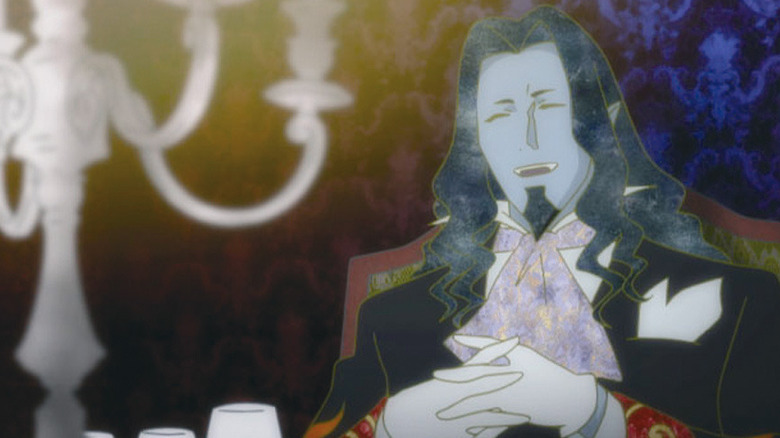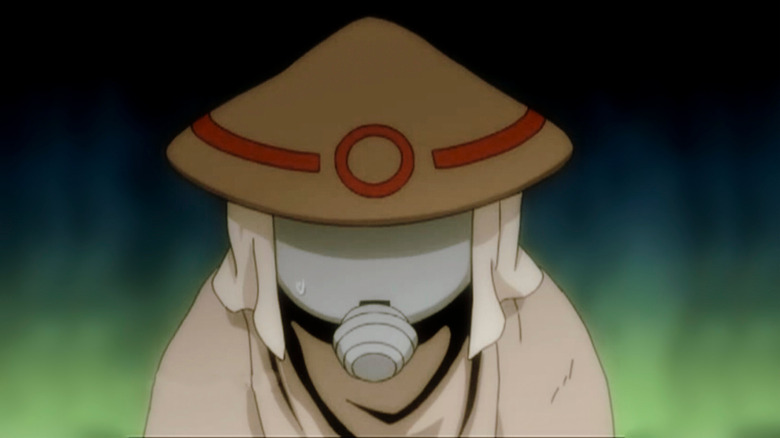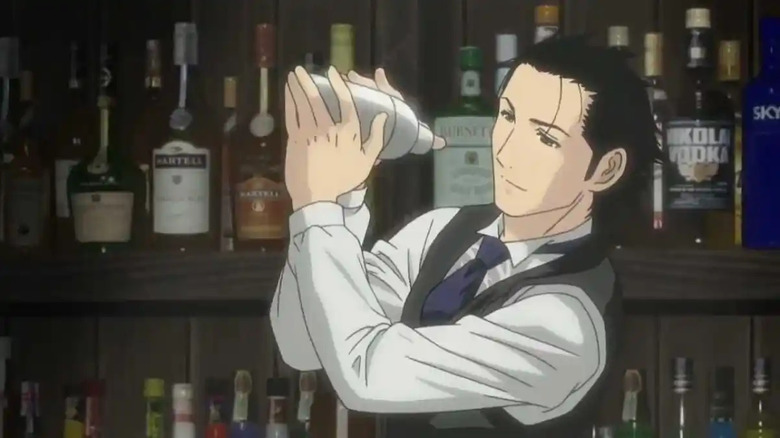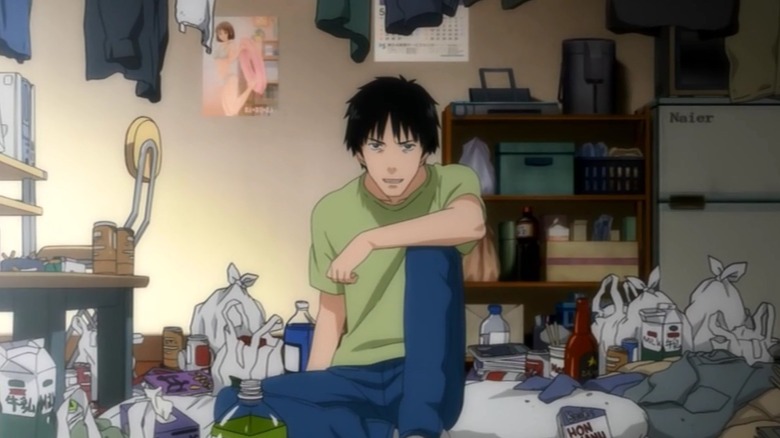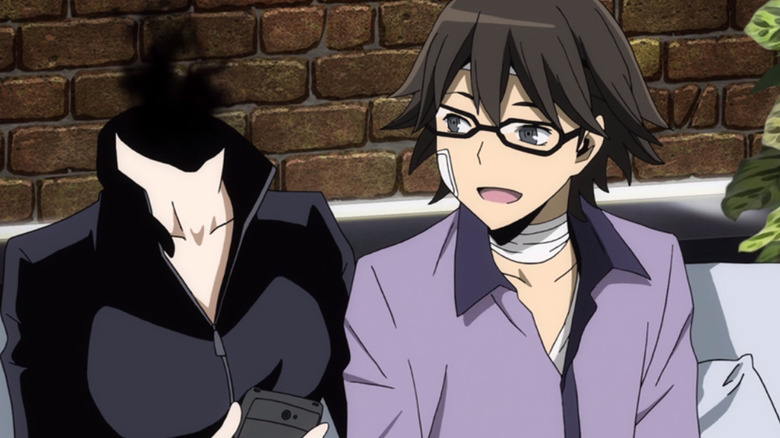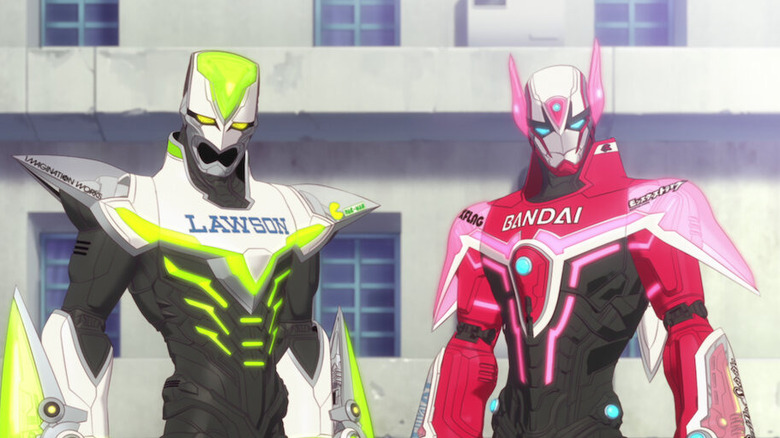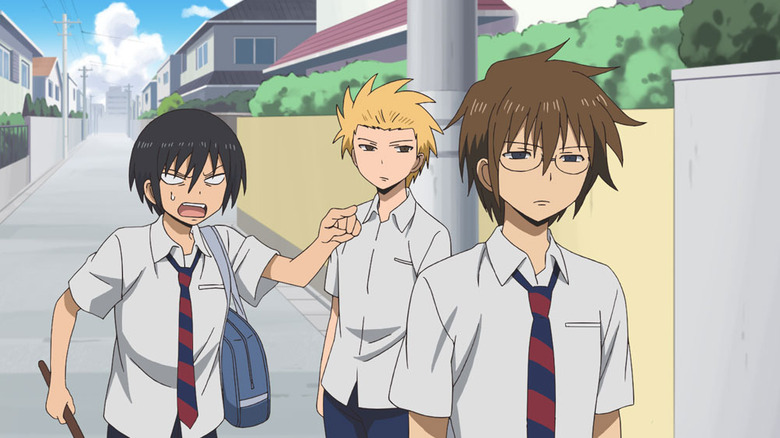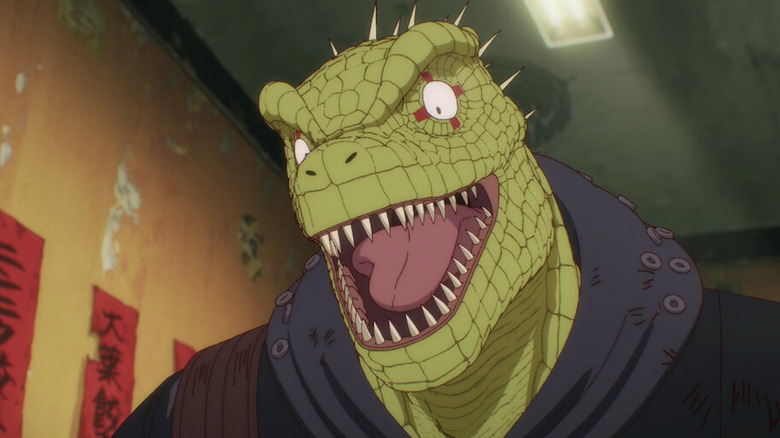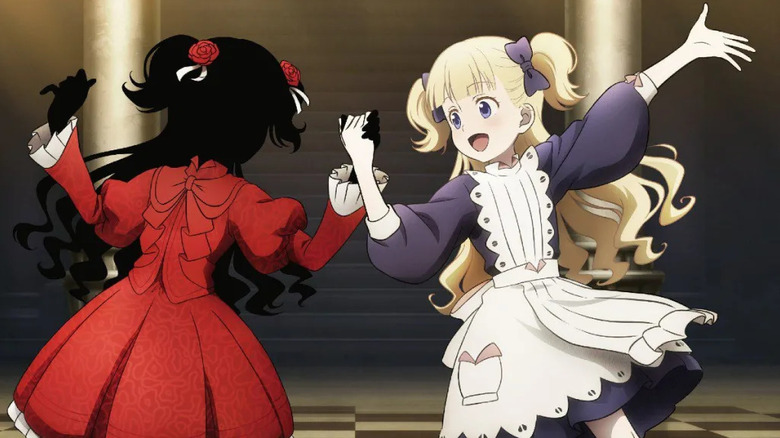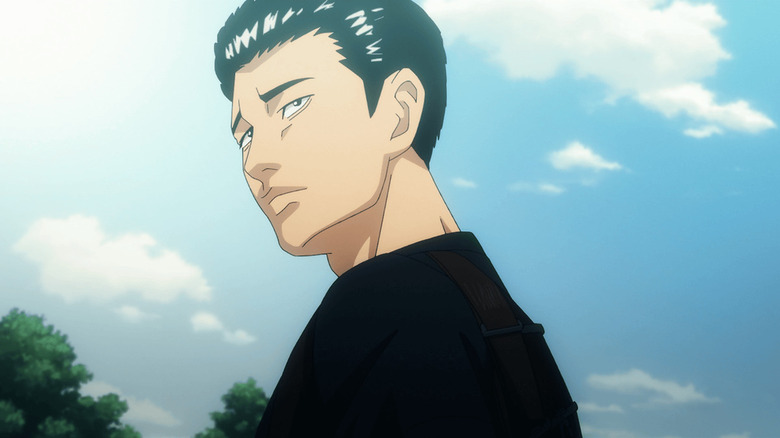15 Underrated Anime Shows That You Really Need To Watch
We may receive a commission on purchases made from links.
With countless anime shows finding millions of fans worldwide, the Japanese-produced animation medium is at its most globally ubiquitous. But for every show like "One Piece" or "Dragon Ball" that boasts strong popularity and immediate recognition, there are scores of anime that are overlooked. Given the sheer breadth of anime releases across the history of the medium, this is understandable, but many shows deserve to be as celebrated as the best anime on Crunchyroll. Indeed, many of the shows listed here are also available to stream on Crunchyroll, giving subscribers no excuse to avoid watching them.
We've already covered the most underrated anime movies that fans need to see next, and now, it's television's turn. The shows included here certainly already have their fair share of fans, but they don't get anywhere as much as the widespread love as their more successful counterparts. With that in mind, it's never too late to rectify this oversight, with these shows still available to watch through various platforms outside of Japan.
Here are 15 underrated anime shows that you really need to watch and spread the word about.
Future Boy Conan
Years before co-founding celebrated animation house Studio Ghibli and directing a line of universally acclaimed films, Hayao Miyazaki's directorial debut was on the 1978 anime series "Future Boy Conan." Loosely adapting American writer Alexander Key's 1970 novel "The Incredible Tide," the story is set in a post-apocalyptic world where the continents are submerged with only small islands sheltering humanity. Adolescent protagonist Conan grows up in seclusion on a remote island, making new friends as he ventures from his home. This also pits Conan against the dictatorial Lepka, a mad scientist out to control what's left of the world.
Even working for an outside studio on a television project, many of the common themes in Miyazaki's work are present in "Future Boy Conan." Prominent anti-war messaging and an appreciation of nature in the face of industrialization are front and center thematically in this anime series. The series received a spin-off, "Future Boy Conan II: Taiga Adventure" in 1999, albeit without Miyazaki's direct involvement. For an early look at the animation genius Miyazaki would become, "Future Boy Conan" provides a glimpse at Miyazaki's directorial beginnings.
Planetes
Years before he launched the complex revenge tale "Vinland Saga," manga creator Makoto Yukimura wrote and illustrated the science fiction manga "Planetes." Adapted into an anime series in 2003, the story follows a spacefaring crew tasked with recovering space debris to prevent it from damaging spacecraft and satellites around Earth. After losing their first ship to a terrorist attack, the crew is given a new ship and joined by rookie Ai Tanabe for a special mission to Jupiter. With the terrorist threat still looming, this assuming crew becomes instrumental in preventing a devastating war poised to extend into outer space.
To be sure, "Planetes" is a very different story than "Vinland Saga," and in more than just its setting and genre. But whereas "Vinland Saga" was all about the all-consuming power of vengeance, "Planetes" is about the value of maintaining one's humanity, even in deep space, to avoid conflict. Those important themes are elevated by the sheer gorgeous visuals capturing the characters framed by their interplanetary mission and the sci-fi wonders around them. A humanist story with the fate of humanity in space as its stakes, "Planetes" truly deserves to be recognized as Yukimura's unsung masterpiece.
Samurai Champloo
"Cowboy Bebop" is one of those essential anime series that everyone should watch, offering a jazz-infused take on the science fiction genre. Many of the 1998 show's creative team reunited for the 2004 anime "Samurai Champloo," changing up genres and musical styles. Set in a deliberately anachronistic vision of feudal Japan, the series follows an unlikely trio wandering across the country. The group consists of rivals Jin and Mugen, a samurai and bandit, respectively, joined by Fuu, the teahouse server who saved both of their lives.
Whereas "Cowboy Bebop" was primarily influenced by jazz, with its musical sensibilities informing its sci-fi storytelling, "Samurai Champloo" was influenced by hip hop. These musical stylings pair well with the swordplay-heavy action, giving a unique energy to the familiar setting and genre. At the same time, the show's creative team were well-aware of their past collaboration, going as far to loosely retell a classic "Cowboy Bebop" episode with their new characters. Nowhere near as celebrated or widely known as "Cowboy Bebop," "Samurai Champloo" still demonstrates its creative team firing on all cylinders.
Gankutsuou: The Count of Monte Cristo
Alexandre Dumas' classic revenge story "The Count of Monte Cristo" received its own far-future anime series under the expanded title "Gankutsuou: The Count of Monte Cristo" in 2004. Set in the 51st century, this version of the story has Earth in the middle of a long-standing war with the extraterrestrial Eastern Empire for control of the cosmos. The story opens with a young man named Albert meeting a mysterious nobleman bearing the title of the Count of Monte Cristo. It becomes clear that the Count has an elaborate vendetta planned for Albert's father General Fernand and his associate Baron Jullian Danglars because of a gradually revealed betrayal.
"Gankutsuou" maintains the broad strokes of Dumas' 19th century story but juxtaposes it with a sweeping space opera backdrop. This unlikely combination works well, bringing a classically regal take on the well-worn interstellar sci-fi takes surrounding the characters. As far as feuds go, the level of planning that the Count undertakes plays out like a meticulous chess game, with plenty of human drama along the way. A science fiction anime remix of the classic revenge tale, "Gankutsuou: The Count of Monte Cristo" breathes new life into Dumas' literary world.
Desert Punk
Another anime like "Cowboy Bebop" worth your time, 2004's "Desert Punk" finds the unorthodox humor after the apocalypse. Based on the manga by Masatoshi Musune, the series takes place in a world reduced to a desert wasteland after a devastating nuclear incident. The story's initial protagonist, nicknamed Desert Punk, is a teenage mercenary wandering the desert to put his lethal skills to use. Desert Punk is eventually drawn into a larger conflict for the fate of the wasteland, joined by his new apprentice Kosuna.
Arguably the show on this list with the most sexually-charged gags, "Desert Punk" rethinks what's possible from a post-apocalyptic story. While the stakes and emotional gut punches definitely stand front and center, there is a healthy dose of comedy throughout the series too. Though an overarching story comes into play towards the end, the show's usual episodic nature makes it easy to follow and enjoy. A cool and funny take on post-apocalyptic tropes, "Desert Punk" uses its setting and premise to great effect.
Bartender
Not every anime needs to have world-changing narrative stakes. Some can just tell a cozy and warmly atmospheric story. The 2006 anime "Bartender," adapting the manga by Araki Joh and Kenji Nagatomo, is a prime example of this smaller scope sensibility. The series follows bartender Ryū Sasakura, who runs a small bar in the Tokyo district of Ginza after receiving formal training in France. The show itself is a series of largely unconnected vignettes, with Sasakura's masterfully made drinks often speaking to his clients' personal issues in their own way.
From its moody primary setting to its detailed step-by-step process in making each episode's drink, including their cultural history, "Bartender" is a comfort anime. Given the episodic nature of the show, it's easy just to sit down and watch the series, without having to keep track of any overarching story. The series received an anime reboot in 2024, under the title "Bartender: Glass of God," retaining the core premise. A sleeper hit that never got the recognition of its action-packed peers, "Bartender" is definitely an anime to wind down while watching.
Welcome to the N.H.K.
Japan has a term for individuals experiencing extreme isolation and withdrawal from society: hikikomori, which is central to the 2006 anime "Welcome to the N.H.K." Based on the novel by Tatsuhiko Takimoto, the story follows Tatsuhiro Satō, who dropped out of university to become a complete social recluse. Tatsuhiro meets a strange girl named Misaki Nakahara who knows a surprising amount about him and offers to cure him of his isolationist lifestyle. As the two work together, Tatsuhiro's suspicions that hikikomori are created by a clandestine conspiracy begin to gain traction.
Social isolation is by no means a Japanese-exclusive phenomenon, and that universal relatability elevates to "Welcome to the N.H.K." For all the conspiracy theories and mind control that drive the story, there is a humanist core to the series where its real appeal lies. There is a quiet drama at play between Tatsuhiro and Misaki that gives the show its more engrossing quality. A fantastic anime on how to cope with loneliness and ennui of daily life, "Welcome to the N.H.K." is an unassuming classic.
Kaiji
Manga creator Nobuyuki Fukumoto often has prominent gambling and criminal elements in his stories, with the series "Kaiji" standing among his best work with these themes. The manga was adapted into a two-volume anime series in 2007 and 2011, as well as a live-action movie trilogy. This crime thriller follows hard-luck protagonist Kaiji Itō who agrees to a deadly gauntlet of gambling competitions to satisfy his large debt to a vicious loan shark. After his successful first run, Kaiji is drawn into even more dangerous games as he becomes involved with various yakuza organizations coordinating these bloody contests.
"Squid Game" creator Hwang Dong-hyuk cited "Kaiji" as an inspiration behind his hit Netflix series, but the anime never quite got the recognition it deserves in America. Fukumoto's story and its anime adaptation is all about outmaneuvering and surviving a literally rigged system, though Kaiji certainly doesn't walk away unscathed. Tautly paced and maintaining a constant intensity, the anime deftly raises the stakes with every subsequent game and plot twist. The ultimate gambling anime, "Kaiji" keeps viewers riveted as its main character delves deeper into his own personal inferno.
Den-noh Coil
The 2007 anime series "Den-noh Coil" premiered just at the dawn of the era when smartphones were becoming widely available. That distinction signals a science fiction prescience that only feels eerier the further we look back at the show in hindsight. Taking place in the near-future of 2026, the show has Japanese society completely embracing the use of Den-noh Coil, or smart glasses, which digitally augment reality around users. As the community becomes unhealthily dependent on the Den-noh Coil, a group of kids learn that might be a danger lurking in the virtual world they've grown accustomed to.
A cyberspace mystery with a strong underlying message about the dangers of growing too reliant on digital technology, "Den-noh Coil" never feels overly preachy. What keeps the story riveting isn't its cogent themes, but rather its strong ensemble cast venturing into the perilous pockets of their mixed reality. This is a coming-of-age story that just happens to prominently feature the growth in virtual reality and web-based technology through the perspective of its youthful protagonists. While largely overlooked in North America upon its debut, "Den-noh Coil" is absolutely worth revisiting more than ever.
Durarara!!
Tokyo is a particularly ripe location for urban fantasy stories, as supported by the 2010 anime series "Durarara!!" Based on the light novels by Ryohgo Narita and Suzuhito Yasuda, the series takes place primarily in the Tokyo neighborhood of Ikebukuro, following academy students Mikado Ryūgamine and Masaomi Kida. The two classmates encounter supernatural figures throughout the neighborhood, including a headless courier, known locally as the Black Rider, searching for her missing cranium. The lives of these characters intersect through their connections to the various gangs in the area.
One of the most appealing things about "Durarara!!" is that the show feels like a true ensemble piece, with numerous point-of-view characters episode-to-episode. This multifaceted approach to the story gives it a depth that many of its contemporaries lack and an extended cast that feels particularly vital. Storytelling breadth aside, the series shines a fun, supernatural light on one of Tokyo's hippest neighborhoods and the dangerous figures in and around it. A well-rounded take on familiar tropes and folklore, "Durarara!!" delves deep into its juxtaposed vision of magic and cyberpunk tech in Japan.
Tiger & Bunny
After decades of producing the best Gundam series across the history of that franchise, the anime studio Sunrise took on a very different mech-suit story with "Tiger & Bunny." The show takes place in a stylized vision of New York City populated by superheroes backed by various corporate sponsors. Veteran hero Kotetsu T. Kaburagi is partnered with Barnaby Brooks, though the two have differing approaches to heroism. As the pair take down a variety of enemies around the city, learning to work together in the process, they investigate the unsolved murder of Barnaby's parents.
"Tiger & Bunny" is bright, vibrant, and breezily fun, though never quite as popular as its other anime counterparts on Netflix. With its prominent presence of corporate sponsors and reality television attention, there is a sly social commentary between the superhero action. But really, what makes the whole show work is the fun dynamic between Kotetsu and Barnaby, providing a fresh wrinkle to the mismatched crime-fighter trope. For those looking for more great superhero anime like "My Hero Academia," "Tiger & Bunny" certainly fits the bill.
Daily Lives of High School Boys
Another slice-of-life manga, this time with a greater emphasis on coming-of-age comedy, Yasunobu Yamauchi's "Daily Lives of High School Boys" was adapted into an anime series in 2012. True to its title, the show centers on three high school boys in Japan and the usual misadventures they get into together. This includes the trio's interactions with their school's student government and their gender-swapped counterparts, the Funky High School Girls. The main ensemble's de facto leader is Hidenori Tabata, who spends much of his time concocting outlandish schemes.
"Daily Lives of High School Boys" isn't about major dramatic developments or big narrative payoffs so much as it focuses on the emotional rollercoaster that is high school. This isn't to say that the show is melodramatic, but it epitomizes a time when anything seemed possible, and every victory and defeat hit a little harder. Adding to the series' appeal is that much of its humor transcends cultural borders, capturing the universal hilarity abundant in one's teenage years. A deliberately low-stakes show but no less entertaining, "Daily Lives of High School Boys" is another well-crafted comfort anime.
Dorohedoro
The manga series "Dorohedoro" by Q Hayashida is admittedly a weird tale, smashing science fiction and fantasy into a deliriously violent package. Adapted into an anime series in 2020, the story's protagonist is Caiman, a man magically cursed to have a reptilian head and no memory of his past life. Caiman scours the post-apocalyptic landscape for the sorcerer responsible for cursing him to restore his appearance and identity, withstanding magical enemies due to his immunity to magic and regenerative abilities. As Caiman meets friends and rivals through his quest, he attracts the attention of sorcerer leader En, who decides to eliminate the would-be hero.
"Dorohedoro" is unapologetically bizarre and not everyone's cup of tea, which is likely why it's not as widely known, but what it does, it does very well. The show has a memorable ensemble cast around Caiman and a strong mystery at its core, punctuated by both brutal action and dark humor. The show also has a CGI animation style that inspired "Attack on Titan" in its final season, highlighting the offbeat show's legacy. A wacky, hellishly tinged take on post-apocalyptic revenge stories, "Dorohedoro" is an eclectic hodge-podge of elements that somehow all gel seamlessly together.
Shadows House
The collaborative duo Somato's dark fantasy manga "Shadows House" was adapted into an anime series in 2021 by CloverWorks. The supernatural tale has living doll Emilico residing in Shadow House, an old mansion that's become home to the paranormal, with her mistress Kate Mirror. The people residing in the coastal manor lack a discernible face, adding to the mystery as Emilico begins bonding with Kate as she serves her. As Emilico grows accustomed to living in Shadow House and working for Kate, she uncovers dark secrets about the house and its residents' true nature.
With its Victorian-inspired setting and art design, "Shadows House" feels like an anime at least partially influenced by the stories of Henry James. That enigmatic aura and mounting tension inform a lot of the series, with that underlying sense of menace elevating as the story progresses. Supernatural stakes aside, the dynamic between Emilico and Kate is a cute one, making it all the more ripe for subversion as the show's big twists finally occur. An appropriately atmospheric Gothic fantasy tale, "Shadows House" has a genuinely engrossing mystery at its core that keeps viewers hooked.
The Fable
The crime thriller manga "The Fable" by Katsuhisa Minami actually a live-action movie adaptation years before it was adapted into an anime series. The story follows a professional killer known throughout the criminal underworld simply as Fable, who often uses a custom pistol to carry out his contracts. Fable's latest contract has him lay low and live as an ordinary civilian under the assumed identity of Akira Sato in Osaka for a full year. Complicating matters is the fact that Fable lives in a yakuza hideout, constantly surrounded by violent criminals, putting his strange assignment to the test.
While "The Fable" manga is a bestseller and the anime was critically well-received after premiering in 2024, the show still feels like it flew under the radar. Though the animation style can feel a bit stiff at times, it does fit with its protagonist's closely guarded and stoic demeanor. The show also retains the sharply crafted crime thriller story that made the manga so popular, with undercurrents of dark humor. "The Fable" is a fantastic blend of criminal stakes and comedy once viewers grow accustomed to the minimalist animation.
